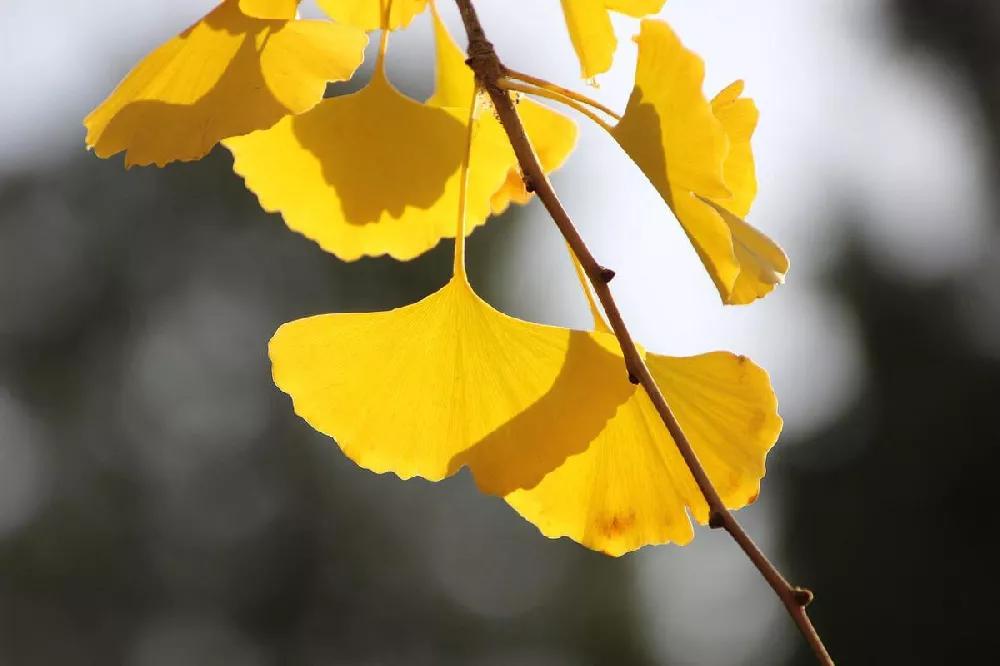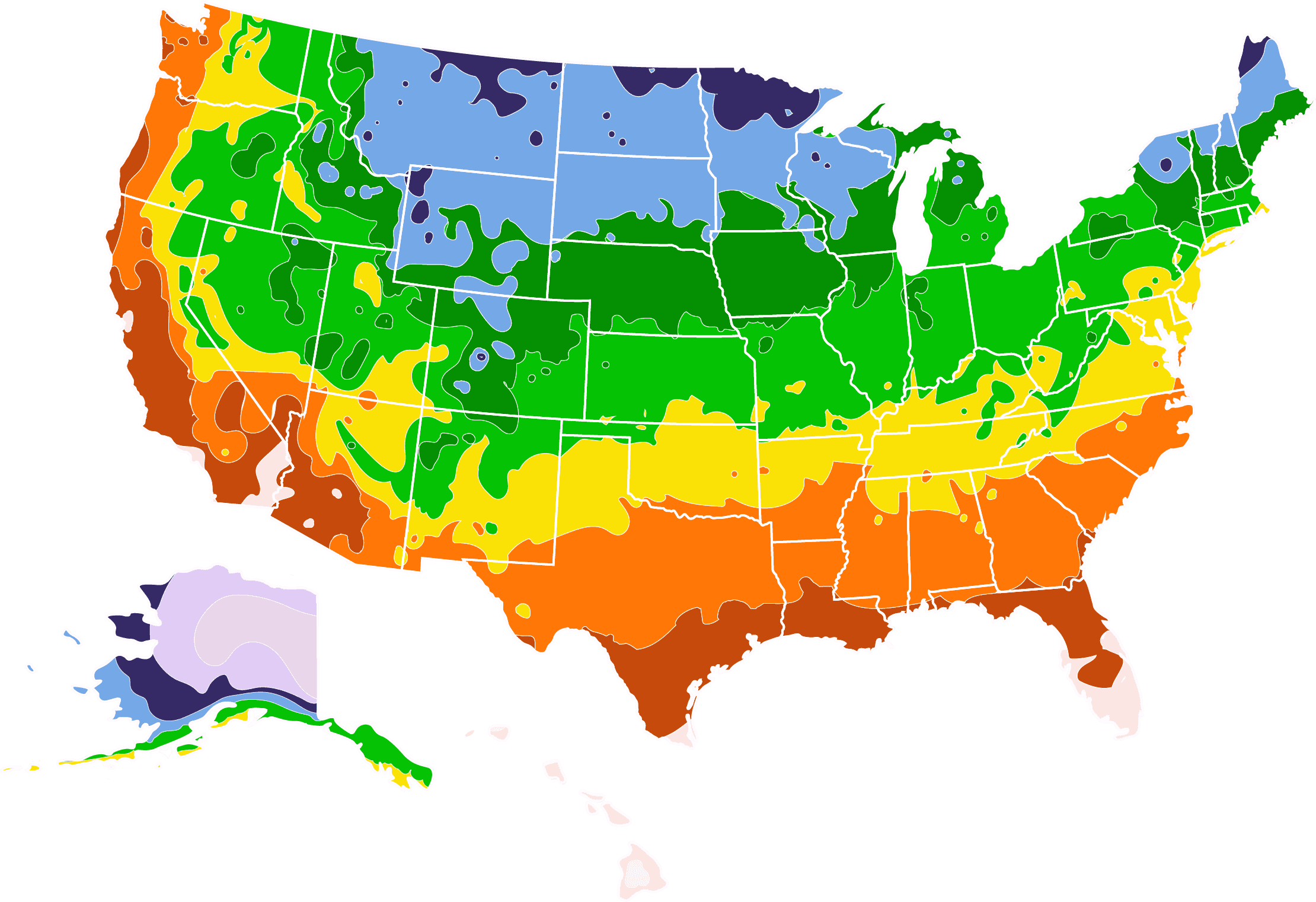- Home >
- Ornamental Trees >
- Sky Tower Ginkgo Tree
Sky Tower Ginkgo Tree for Sale - Buying & Growing Guide
Sky Tower Ginkgo Tree, Ginkgoaceae 'Sky Tower,' is the remnant of an ancient family of trees that was around when dinosaurs roamed the earth. That alone makes it worth considering for your garden — but there's more. It's practically indestructible, hardy enough to withstand both heat and cold, and resistant to pests and diseases. The tree grows in just about any type of soil and isn't fussy about whether it's acidic or alkaline. Plus, it's an attractive tree with spectacular yellow coloration in the fall, with fan-shaped leaves that add interest and texture to any garden. Need more reasons to try Sky Tower Ginkgo in your garden? Here are a few:
- Tops out at a respectable 15-20 feet tall, but only 5-10 feet wide, making it an excellent vertical element in your garden.
- Tolerant of salt and pollution.
- Doesn't attract deer, but makes an excellent habitat for songbirds.
Enter your zip code to find nearby stores that may carry this plant.
Plant Care
Sunlight

Sky Tower Ginkgo Tree thrives in full sun, needing six to eight hours of direct light a day.
Watering
Mature trees are drought-resistant; water young trees weekly when newly planted.
Fertilizing

Fertilize in late winter with a balanced, slow-release formula designed for landscape trees and shrubs.
Planting and Care
Planting instructions
Choose a site for your Ginkgo in well-draining soil that gets six to eight hours of sun a day and isn’t under any low-hanging overhead wires or cables. Unpot your sapling and tease out any encircling roots, which can girdle the tree and slowly kill it. Dig a hole that’s as deep as the root ball and two to three times as wide. Place the tree in the hole, spreading out the roots, and, while holding it upright and steady, fill in around it with topsoil. Tamp down the soil as you go to eliminate air pockets. Water thoroughly. Apply a 2-3 inch layer of an organic mulch such as bark chips around the root zone to conserve moisture and hinder weed growth.
Watering and nutrients
When newly planted, water your Sky Tower Ginkgo Tree several times a week until you see robust new growth on the plant, then scale back to once a week. After its first year, your tree should only need supplemental watering during severe drought or heat waves. Check the soil 3 inches below the surface if you’re not sure — if it’s dry, give your tree a drink. Fertilize your Ginkgo Tree in spring before buds break with a slow-release, balanced fertilizer designed for landscape shrubs and trees.
Pollination
Sky Tower Ginkgo Tree is a male cultivar, so there is no need for pollination. Female ginkgo trees emit a foul-smelling odor from their seeds, so they are generally not sold for home use.
Pruning
Sky Tower Ginkgo Tree doesn’t need annual pruning. Monitor the tree regularly for any broken, dead, or diseased branches, and cut these out when you see them. If you wish to prune to shape the tree when it’s young, it’s best to do this in spring or early summer.
Pests, diseases, and animals
Ginkgo trees have been around for millions of years because they have few insect pests or diseases. The tree contains acids that deter or kill insect larvae, so it is rare to see an insect of any kind on the tree. Diseases are uncommon too. Once in a great while, you may see signs of bacterial leaf scorch or wood decay fungi, which mainly attacks old trees. Removing dead or diseased limbs and keeping the area around the tree free of leaf litter or debris can help keep your tree healthy.
Achieving maximum results
Siting your tree carefully can make all the difference with a Sky Tower Ginkgo Tree. With its dramatic fall foliage color, it’s a great tree for a spot that needs a splash of color. Its tall, vertical orientation can also be used to good effect in the garden. Consider a colonnade of the trees lining a walkway or driveway, for example. Because of their narrow width, they can be planted relatively close to buildings, making them a good choice for a foundation planting. A single tree can be used as a specimen planting, or to form a colorful backdrop for smaller flowering shrubs.
FAQs
Where does Sky Tower Ginkgo Tree grow outdoors?
The Sky Tower Ginkgo grows in many areas, reaching U.S. Department of Agriculture hardiness zones 3-9, which includes most of the U.S., well into northern Canada, as well as into Mexico. It can handle the subtropical climate of most of the southern states, with the exception of the southern tip of Florida, but also thrives in the frigid weather of northern Maine.
How fast does Sky Tower Ginkgo grow?
Sky Tower Ginkgos are slow growers, especially when recently planted, and may put on a foot or so of new growth a year before they reach their mature height of 15-20 feet. These "living fossils" are long-lived trees; however, with specimens growing today that are more than 1,000 years old.
Is the Sky Tower Ginkgo a good tree for an urban backyard?
For several reasons, it's an excellent tree for city plots. First, this tree takes up little space, so is well suited for smaller urban lots. In addition, it is highly resistant to air pollution, and isn't bothered by smog or car exhaust fumes. Finally, it is an easy-to-care-for tree that won't need a lot of attention in order to grow tall.
Compare Similar Products
You can't add more Product Name - Product size to the cart.
OK










